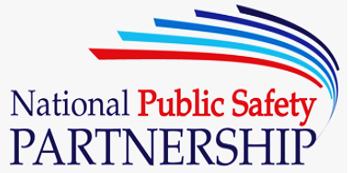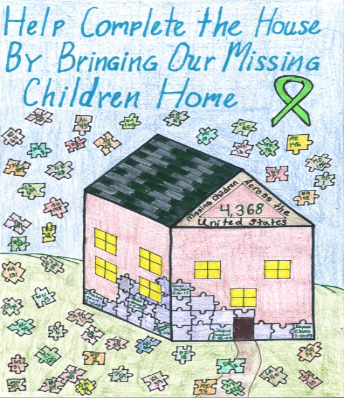Department of Justice Convenes Meeting of National Public Safety Partnership
 On September 9–11, the National Public Safety Partnership (PSP) held its 2019 symposium in Memphis, TN. Established in June 2017, PSP provides a single point of access to an array of Department of Justice resources, training, and technical assistance for 41 sites working to reduce violent and other serious crimes related to gangs, guns, and drugs.
On September 9–11, the National Public Safety Partnership (PSP) held its 2019 symposium in Memphis, TN. Established in June 2017, PSP provides a single point of access to an array of Department of Justice resources, training, and technical assistance for 41 sites working to reduce violent and other serious crimes related to gangs, guns, and drugs.
The symposium offered about 40 training sessions that addressed a range of topics, including community engagement, crime analysis, collaboration between criminal justice stakeholders, federal partnerships, gun violence, investigations, and technology. The sessions highlighted future assistance that can be provided to the sites through training and technical assistance, consultation, peer exchanges, and other resources.
OJJDP has supported PSP through training and technical assistance on juvenile crime and violence prevention, including best practices on gang prevention, intervention, and suppression, through the National Gang Center. Cynthia Pappas, OJJDP Senior Policy Advisor, worked previously with the pilot site in Newark, NJ, and is currently working with the sites in Birmingham, AL, and Wichita, KS, to support their efforts to investigate, prosecute, and deter violent crime, especially crime involving gun violence, gangs, and drug trafficking. Ms. Pappas also provides resources and guidance to help PSP sites reduce violent crime and increase public safety by exploring new community engagement activities designed to build positive relationships among police and the communities they serve.
Office of Justice Programs’ Blog Discusses AMBER Alerts in Indian Country
The Office of Justice Programs (OJP) has posted a blog discussing AMBER Alerts in Indian country born out of the tragic abduction and murder of 11-year-old Ashlynne Mike of the Navajo Nation in 2016. The tragedy revealed that American Indian tribes lacked access to the AMBER Alert system to assist in the recovery of abducted children.
The blog details last summer’s National AMBER Alert in Indian Country Symposium, sponsored by OJJDP, where Pamela Foster, Ashlynne's mother, shared her story. The blog describes the passage of the Ashlynne Mike AMBER Alert in Indian Country Act and highlights how OJP and OJJDP are working with tribes to integrate AMBER Alerts.
OJJDP Video Message Highlights Restorative Justice
In a new video, OJJDP Administrator Caren Harp and members of OJJDP’s Restorative Justice Working Group share their perspectives on the value of restorative justice practices in the juvenile justice system. Restorative justice focuses on holding offenders personally accountable to their victims and to the community at large—often through face-to-face meetings and reparative actions such as financial restitution to victims, the repair of victims' damaged property, or work for the betterment of the community.
“The juvenile justice system as it operates currently is formal and uses a lot of statutory language and citations, and it keeps the youthful offender away from the victim and allows the offender only to speak through his attorney,” said Administrator Harp. “There are a lot of processes in place that make it kind of sterile and keep the offender from really engaging with his criminal conduct. That’s something that restorative justice changes, because restorative justice looks at crime as harm . . . harm caused by one individual to the detriment of another. A restorative process for both victim and the offender helps them both come together, face to face, and evaluate and assess the harm that’s been done—and how that harm can be repaired.”
The Office’s Restorative Justice Working Group plans to produce a user-friendly guide that will offer standard definitions for the components of restorative justice and its foundational values. The guide will describe planning and implementation and provide a framework that engages all juvenile justice system stakeholders in the restorative justice process.
OJJDP Administrator Discusses Juvenile Justice Reform Act at Conferences
In early August, Administrator Caren Harp provided an overview of the Juvenile Justice Reform Act of 2018 (JJRA) at the 36th Annual Conference of the Tennessee Juvenile Court Services Association in Memphis and the 42nd Juvenile Justice Symposium in Biloxi, MS. JJRA reauthorizes and amends the Juvenile Justice and Delinquency Prevention Act, last reauthorized in 2002.
Administrator Harp discussed a range of topics, including the expansion of program areas that states may support with formula grants, new provisions regarding states’ 3-year plans, and the composition and duties of state advisory groups. In addition, she summarized JJRA provisions regarding juvenile reentry planning, identification and reduction of racial and ethnic disparities, use of the valid court order exception, and transfer of juveniles to criminal court. States must now describe an “effective” system of monitoring for compliance with the core requirements but no longer need to include nonsecure facilities in their monitoring universe.
For more information on JJRA, read OJJDP’s fact sheet and 2018 JJRA redline, which allows users to closely track changes implemented by the legislation.
OJJDP’s Model Programs Guide Offers Resources To Prevent Bullying in Schools
 October is National Bullying Prevention Month, an annual campaign to raise public awareness about the prevalence and consequences of bullying and effective ways to stop this harmful behavior.
October is National Bullying Prevention Month, an annual campaign to raise public awareness about the prevalence and consequences of bullying and effective ways to stop this harmful behavior.
OJJDP’s Model Programs Guide offers a School-Based Bullying Prevention Implementation Guide (I-Guide) for school administrators, teachers and school staff, students, parents, and others in the community who are interested in creating safe school environments by implementing school-based bullying prevention programs. The I-Guide covers all aspects of program implementation, including conducting a needs assessment, obtaining stakeholder buy-in, providing program training, handling unanticipated problems or setbacks, and ensuring long-term sustainability.
The Model Programs Guide also includes evaluations of school-based anti-bullying programs. Programs that are deemed effective encourage collaboration from the entire school community and promote a culture in which students feel comfortable seeking help when they are bullied. The issue of school-based bullying is further explored in the Model Programs Guide’s Bullying Literature Review.
OJJDP Updates Statistical Briefing Book
OJJDP has updated its Statistical Briefing Book:
- Easy Access to Juvenile Populations and related FAQs in the Juvenile Population Characteristics and Hispanic Youth in the Juvenile Justice System sections have been updated to 2018.
- FAQs in the Juvenile Population Characteristics section have been updated, including living arrangements, teen mothers, and high school completion.
- Easy Access to State and County Juvenile Court Case Counts has been updated to include data through 2017.
- FAQs about school-related violent deaths in the Juveniles as Victims section have been updated to include 2017 data.
- FAQs about juveniles in adult jails and prisons have been updated to include 2017 data.
Developed for OJJDP by the National Center for Juvenile Justice, the research division of the National Council of Juvenile and Family Court Judges, the Statistical Briefing Book offers easy online access to statistics on a variety of juvenile justice topics.
Two New Data Snapshots on Juveniles in Court Available
The OJJDP Statistical Briefing Book has added two new Data Snapshots that draw on data from OJJDP’s National Juvenile Court Data Archive:
- Characteristics and Trends of Delinquency Cases Resulting in Probation
- Characteristics of Cases Judicially Waived from Juvenile Court to Criminal Court
Access the full list of Data Snapshots available from the Statistical Briefing Book.
 Shown above is the winning poster for the 2019 Missing Children's Day poster contest. This artwork will inspire the poster and artwork for the 2020 Missing Children's Day.
Shown above is the winning poster for the 2019 Missing Children's Day poster contest. This artwork will inspire the poster and artwork for the 2020 Missing Children's Day.
OJJDP Accepting Nominations for the 37th Annual Missing Children’s Day Awards
Do you know an individual or organization who has made a significant contribution to protecting children between January 1, 2019, and November 14, 2019?OJJDP is accepting nominations until November 14, 2019, for the following Missing Children's Day awards:
- Attorney General's Special Commendation
- Missing Children's Law Enforcement Award
- Missing Children's Child Protection Award
- Missing Children's Citizen Award
Award winners will be honored at the National Missing Children's Day ceremony on May 20, 2020, in Washington, DC.
OJJDP Roundtable: Reducing Out-of-Home Placement and Improving Community Supervision
In 2017, OJJDP launched the Juvenile Justice Systems Improvement Promising Practices initiative. ICF Incorporated, LLC, received a grant award to synthesize, collect, and interpret the outcomes, models, and best practices of previously funded OJJDP projects. The initiative aims to inform the juvenile justice field about promising practices and lessons learned from the states through roundtable discussions and the development of resources and tools to support states, local governments, and communities in improving outcomes for youth.
As part of the initiative, OJJDP held the third of four expert roundtable discussions in Washington, DC, on July 9. The meeting focused on system improvement efforts to reduce out-of-home placement and improve community supervision for youth transitioning out of the juvenile justice system. Participants represented a range of agencies and included OJJDP’s Deputy Administrator Chyrl Jones, Deputy Associate Administrator Dr. Sanzanna Dean, and Program Manager Gwendolyn Dilworth. These participants, along with ICF’s project team—representatives from Georgetown University’s Center for Juvenile Justice Reform and several members of a panel of juvenile justice experts—discussed how best to implement, lead, and sustain these system improvements in the states.
In group discussions and breakout sessions, participants highlighted the importance of developing a cross-system planning team; offering information, resources, and training to the judiciary; ensuring buy-in from judges; developing well-defined data to facilitate collaboration with the judiciary, the legislature, and local commissioners; and providing courts with the necessary tools to track data and monitor outcomes.
Participants also discussed components that are key to the success of community supervision improvement efforts: reinvesting in resources for training and the rollout of new protocols to the community, involving case workers early in the planning of new protocols, and using a local “champion” to help ensure staff support. Other key components include incorporating regular feedback from parents and youth with experience in the juvenile justice system, developing relationships with potential employers in the community, and developing a statewide system for data tracking.
